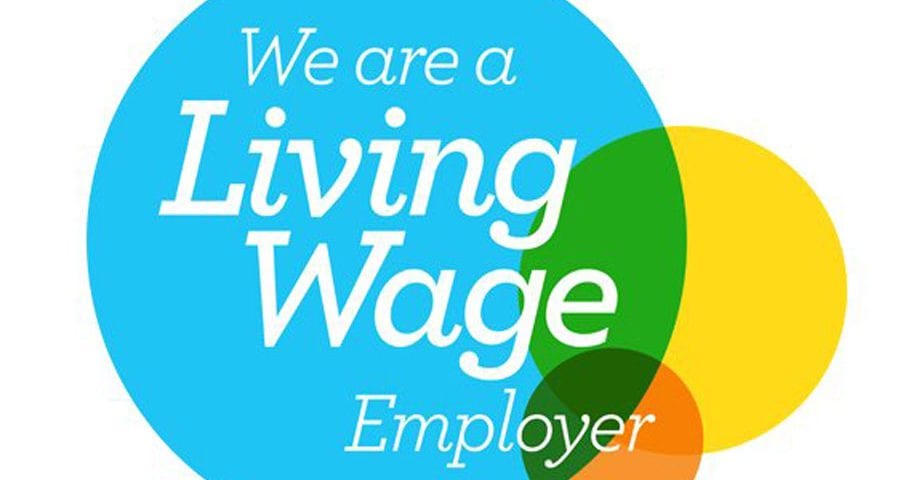
An Agile approach
October 16, 2020
Supporting Creativity in the Community
November 17, 2020Here at Aquarium, we like to think of ourselves as a responsible employer. This means that we work hard to create an environment that enables all of our staff to flourish – both inside and outside the business.
We believe that this starts by investing in people, which is why we are proud supporters (and purveyors) of the real Living Wage.
Not sure what we’re talking about?
Then read on to find out what the real Living Wage is, how it differs from the National Living Wage and why we think it’s important to pay staff fairly.
What is the real Living Wage?
The real Living Wage is the recommended minimum hourly pay for workers over the age of 25.
In the UK, this currently stands at £9.30 per hour, although the London Living Wage (which is calculated separately) is £10.75.
These figures are calculated by the Resolution Foundation and based on the actual cost of living. It takes into account factors such as:
- Housing
- Utilities
- Child care
- Food
- Clothing
The Living Wage was first introduced in 2001 by Citizen UK in response to concerns that the minimum wage didn’t stretch far enough. Since then, the Living Wage Foundation has dedicated itself to championing the scheme and encouraging more businesses to increase pay to a reasonable level.
How is the National Living Wage different to the real Living Wage?
While the real Living Wage and the National Living Wage (NLW) might seem like one in the same, confusingly, they’re actually very different.
The National Living Wage was introduced in 2016 and is set by the government. It essentially replaced the original ‘minimum wage’ and is the statutory lowest pay for workers over the age of 25.
This is currently £8.72 per hour, and unlike the real Living Wage, is based on median earnings as opposed to the actual cost of living.
As for the minimum wage, this is now reserved for those under 25, with different rates for different age bandings. These range from £4.55 for under-18s to £8.20 for 21-24 year-olds.
Do employers have to pay the real Living Wage?
The real Living Wage is entirely voluntary and has no relation to the government’s directive. Employers are only legally required to pay the National Living Wage.
At present, around 6,000 businesses in the UK support the real Living Wage and more than 180,000 employees have benefited as a result.
Some of the biggest names to have joined the initiative already include British Gas, HSBC, ITV, IKEA and Liverpool Football Club.
Why Aquarium supports the real Living Wage
We believe in honest pay for honest work. For this reason, we not only voluntarily pay the real Living Wage, but go beyond it.
While higher salaries might seem counterintuitive for your average employer, for us, it was a no brainer.
Studies have shown that paying the real Living Wage results in increased staff motivation, better relationships and greater productivity.
We see these benefits every day, but we’re not in this for ourselves; we pay the real Living Wage because we think it’s the right thing to do.
Want to find out more about our ethos?
We’re passionate about what we do and love to shout about it.
If you’re interested in learning more about Aquarium and our people-centric culture, you can visit our people blog or find us on our social channels.





